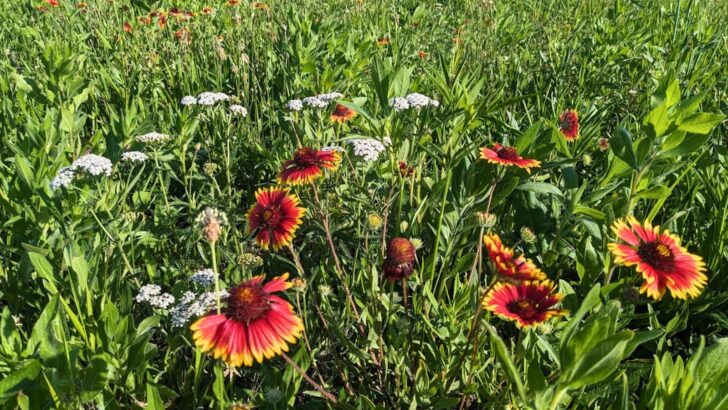Growing native plants is a great way to support pollinators like butterflies and bees, songbirds, and other wildlife. Even the smallest patio garden can provide much-needed habitat for native creatures. And it doesn’t have to be difficult! Many beautiful native wildflowers, such as those listed here, are incredibly easy to grow.
1. Lupine (Lupinus spp.)
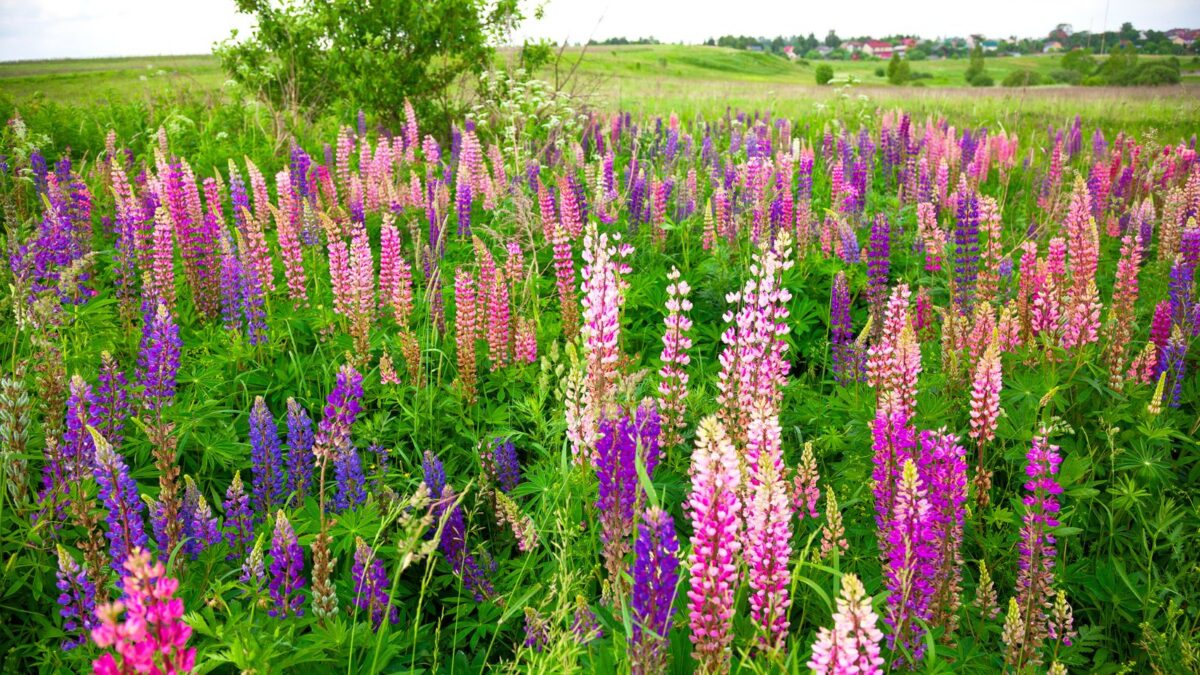
Image credit: Depositphotos.
Most of the 300 species of lupine are native to western North America, though a few originate from a region spanning from the Mediterranean down to Tanzania. Hybrids exist as well. In late spring to early summer, its showy spikes of pea-like blossoms bloom in shades of pink, purple, blue, or white.
This herbaceous perennial typically prefers a cooler climate and grows best in USDA zones 4-8. It needs good drainage and full sun to part shade.
2. Wild columbine (Aquilegia canadensis)
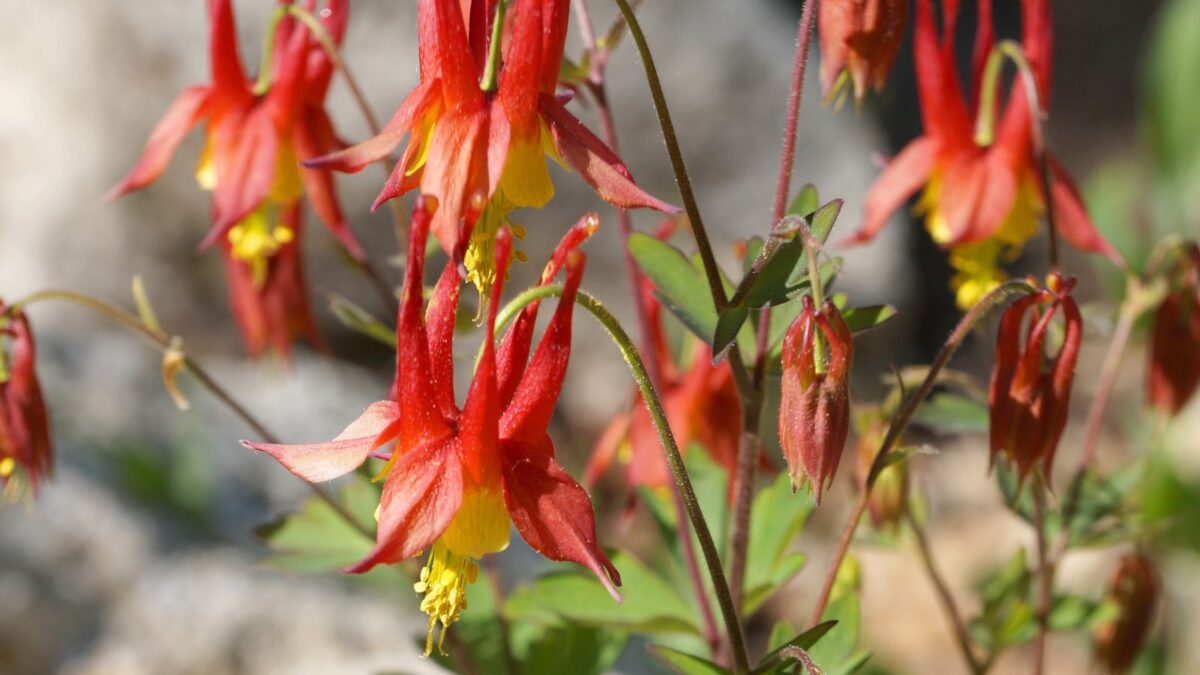
Image credit: Depositphotos.
A unique woodland flower, wild columbine blooms in spring with distinctive downward-facing flowers that feature bright red, upright spurs above a yellow center. Shaped something like a bell or an eagle’s claw, these blossoms attract hummingbirds, bees, and butterflies.
Wild columbine prefers moist, organically rich soil in part shade. It thrives in zones 3-8.
3. Black-eyed Susan (Rudbeckia hirta)
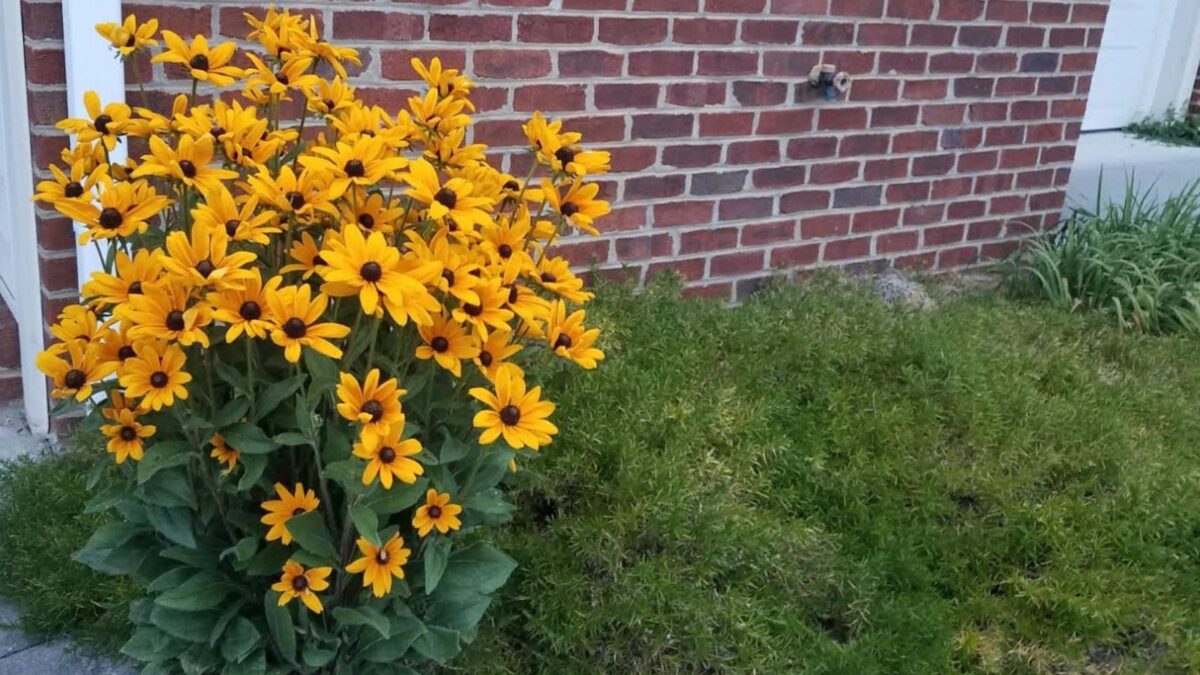
Image credit: Backyard Garden Lover.
Named for the dark eye at the center of its golden petals, black-eyed Susan blooms profusely from midsummer until midfall, especially with deadheading. Though a biennial or short-lived perennial, it flowers in its first year. This fast-growing plant reaches two to four feet tall and readily self-sows.
Black-eyed Susans thrive in moist, well-drained soil full to part sun. This eastern wildflower grows best in zones 3-8.
4. California Poppy (Eschscholzia californica)

Image credit: Backyard Garden Lover.
The state flower of its namesake, California poppy, sends up vivid orange to creamy white blossoms on tall stalks in spring through midsummer. The silky, cup-shaped flowers wave above mounds of feathery foliage that provide beautiful texture. Deadheading encourages reblooming, but leave some flowers to reseed.
This annual grows best in zones 6-10 and may overwinter in zones 8-10. California poppy tolerates drought and requires well-drained soil in full sun.
5. Purple Coneflower (Echinacea purpurea)

Image credit: Backyard Garden Lover.
The pinkish-purple, downward-facing petals of purple coneflower open in early summer and continue blooming into fall. These pretty flowers attract pollinators, and the seeds that follow in the brown, domed heads feed songbirds. A self-sowing perennial, purple coneflower grows three to four feet tall and returns year after year.
Purple coneflower is widely adaptable and tolerates a range of soil types and drought. It grows best in moist, well-drained soil and full to part sun in zones 3-8.
6. Swamp Milkweed (Asclepias incarnata)

Image credit: Depositphotos.
No pollinator garden is complete without milkweed, and swamp milkweed is one of the showiest and easiest to grow. Its clusters of tiny, bright pink flowers begin blooming in early spring and continue into fall for beautiful, season-long color. This striking perennial grows up to five feet tall.
Swamp milkweed grows equally well in full sun and part shade. And though it prefers wet conditions, it will also grow in moist, well-drained soil. It is hardy in zones 3-9.
7. Blanket Flower (Gaillardia aristata)
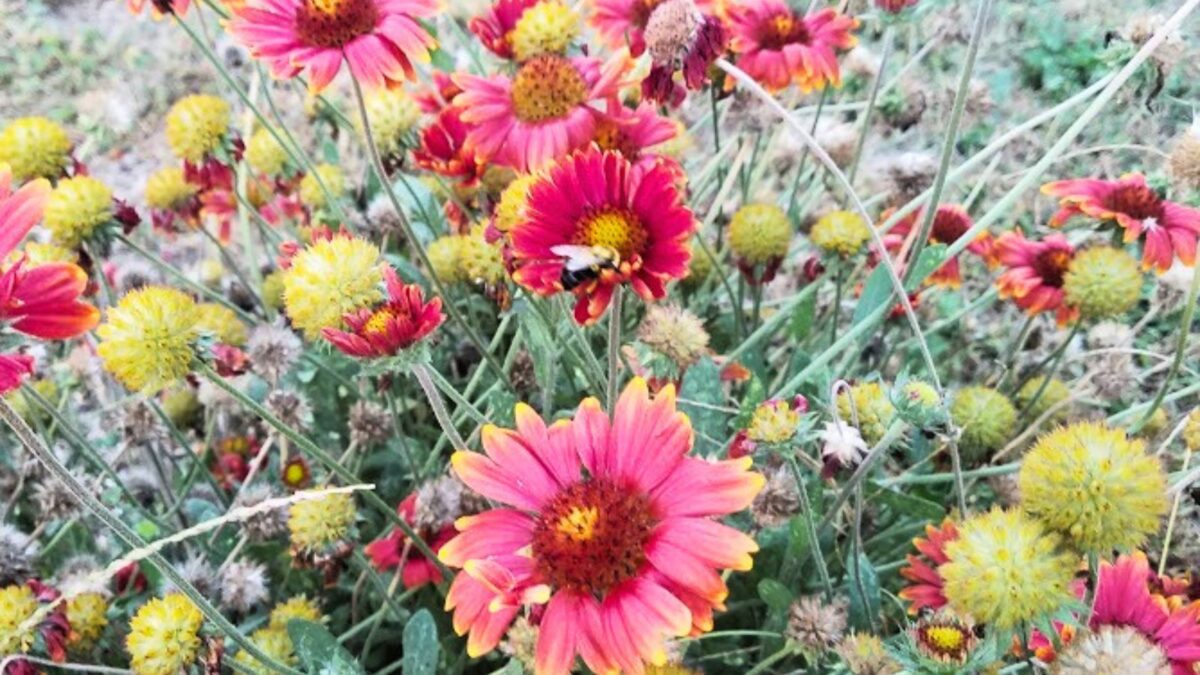
Image credit: Backyard Garden Lover.
Blanket flower produces season-long blooms from spring through late summer. Each large, daisy-like flower has gold-tipped petals with orange-red bases that attach to a reddish center for a striking, fiery display. This herbaceous perennial grows one to three feet tall.
Provided with full sun and good drainage, the blanket flowers will grow happily even in hot, dry conditions. It thrives in zones 3-8.
8. Large-flowered beardtongue (Penstemon grandiflorus)
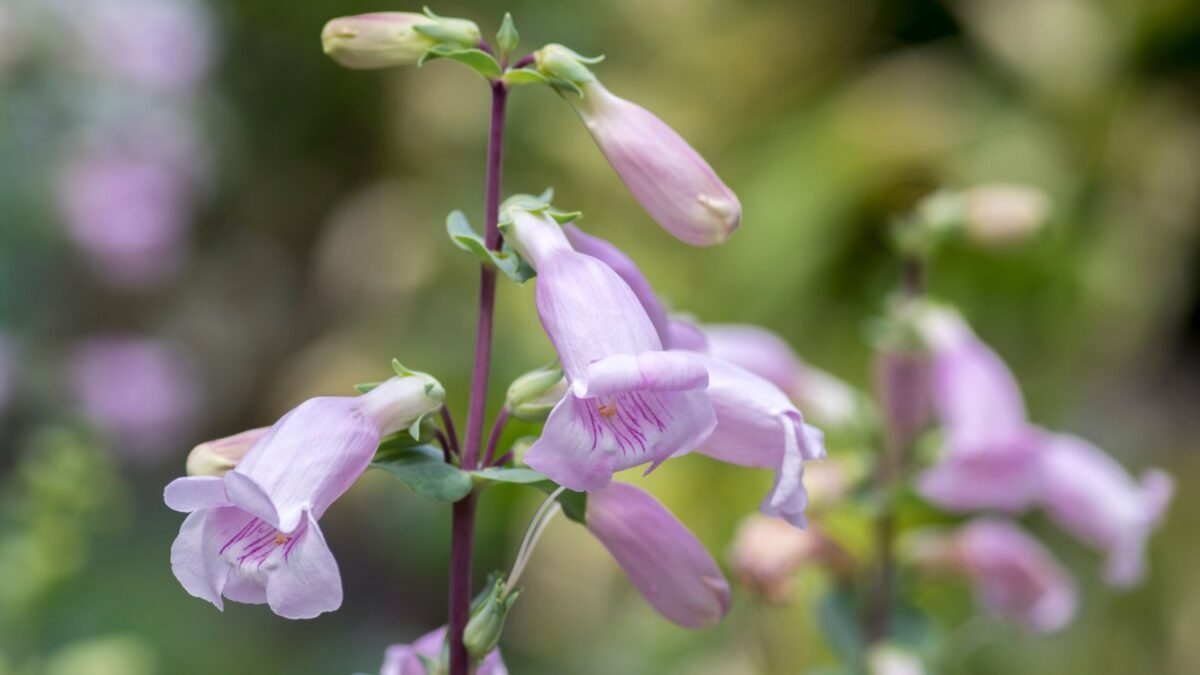
Image credit: Depositphotos.
Plant large-flowered beardtongue to attract bumblebees, hummingbirds, and other pollinators with its beautiful purple, tubular flowers in late spring and early summer. This perennial grows two feet tall and looks spectacular in mass plantings and meadows.
A versatile, low-maintenance wildflower, large-flowered beardtongue thrives in poor soil, dry conditions, and full sun to part shade. It will grow almost anywhere in zones 3-9.
9. Plains Coreopsis (Coreopsis tinctoria)
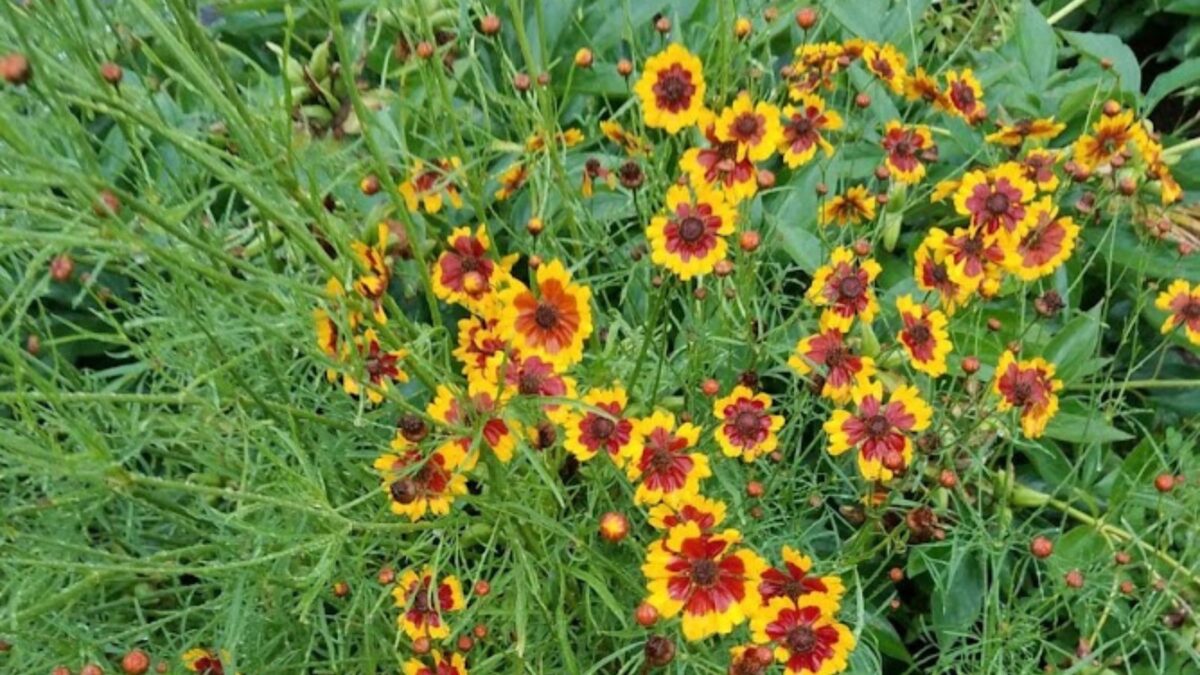
Image credit: Backyard Garden Lover.
Like blanket flower but an annual, garden coreopsis features long-lasting, bicolor blooms. The notched petals are golden toward the outer edges and red-brown at the base, with reddish-purple centers. Airy, feathery foliage complements the flowers with its own beauty.
Garden coreopsis will grow just about anywhere in zones 2-11. It tolerates poor soil, drought, and heat, though it prefers light, well-drained soil in full sun.
10. White Turtlehead (Chelone glabra)
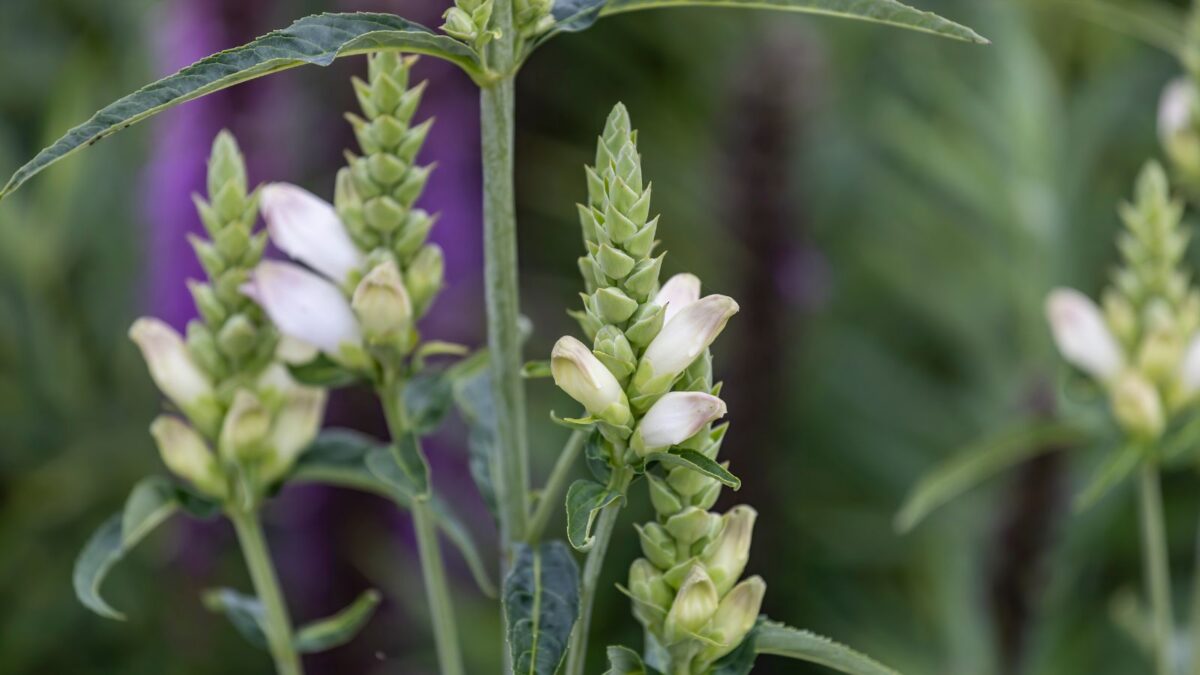
Image credit: Depositphotos.
True to its name, the white turtlehead has dense spikes of white, two-lipped flowers that resemble a turtle head. This erect, clump-forming perennial blooms midsummer into fall, attracting butterflies, bees, and hummingbirds, among other pollinators.
White turtlehead thrives in moist to wet, organically rich soil and full sun to partial shade. It grows best in zones 3-8.
11. Compass plant (Silphium laciniatum)
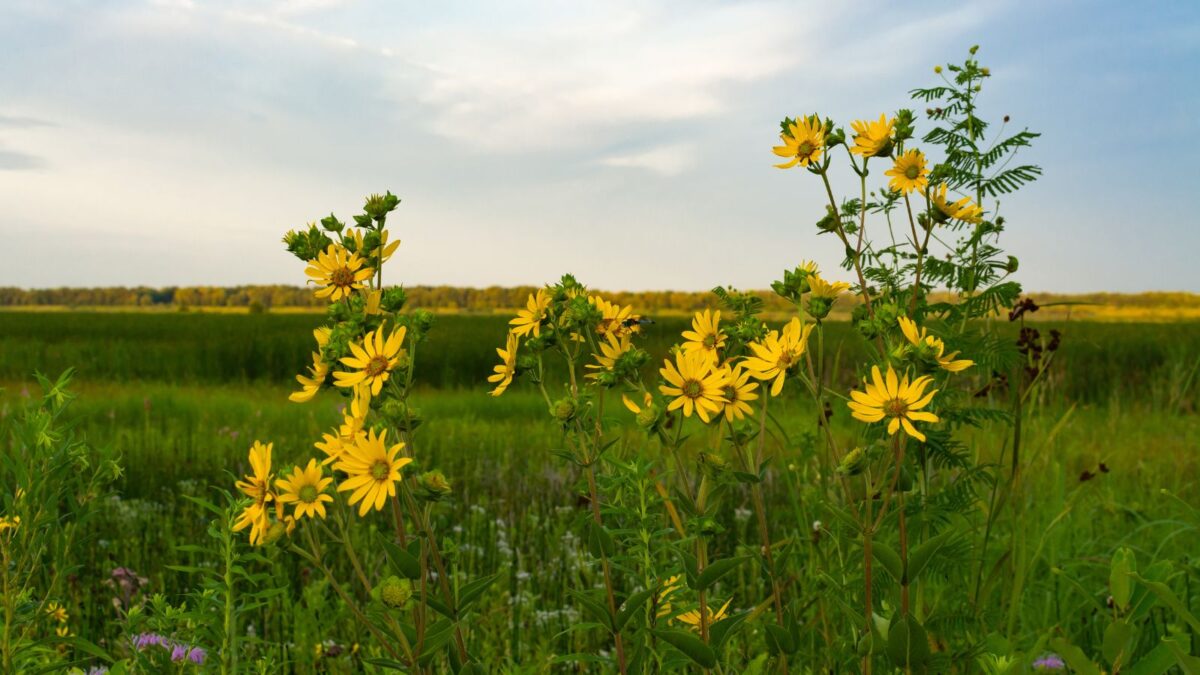
Image credit: Depositphotos.
Towering up to nine feet tall, the compass plant blooms prolifically in summer with sunny yellow, sunflower-like flowers. This perennial wildflower gets its common name from the tendency of its leaves to point north and south.
Compass plants grow in zones 3-8 and prefer moist, well-drained soil in full sun.
12. Butterfly Weed (Asclepias tuberosa)
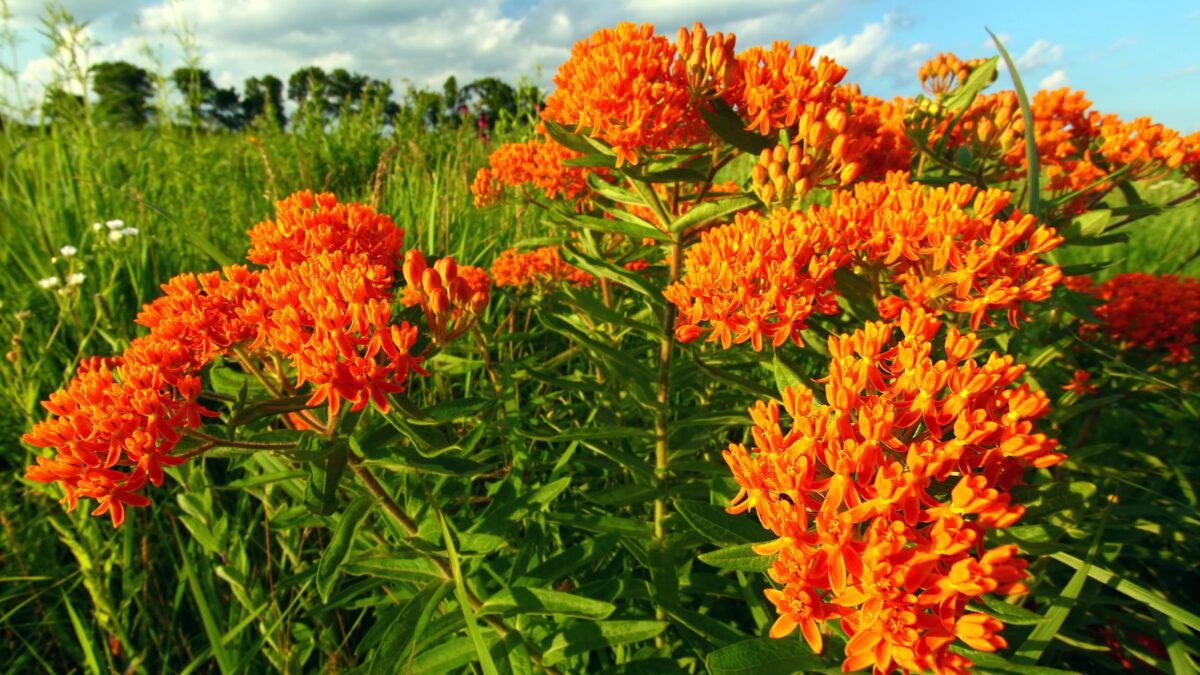
Image credit: Depositphotos.
A unique species of milkweed, butterfly weed, produces striking orange flower clusters throughout the summer. This clump-forming perennial grows one to three feet tall and freely self-sows, though removing the unripe seed pods can prevent this if desired.
Tolerant of drought and poor soil, butterfly weed thrives in full sun and dry to medium, well-drained soil. It grows best in zones 3-9.

